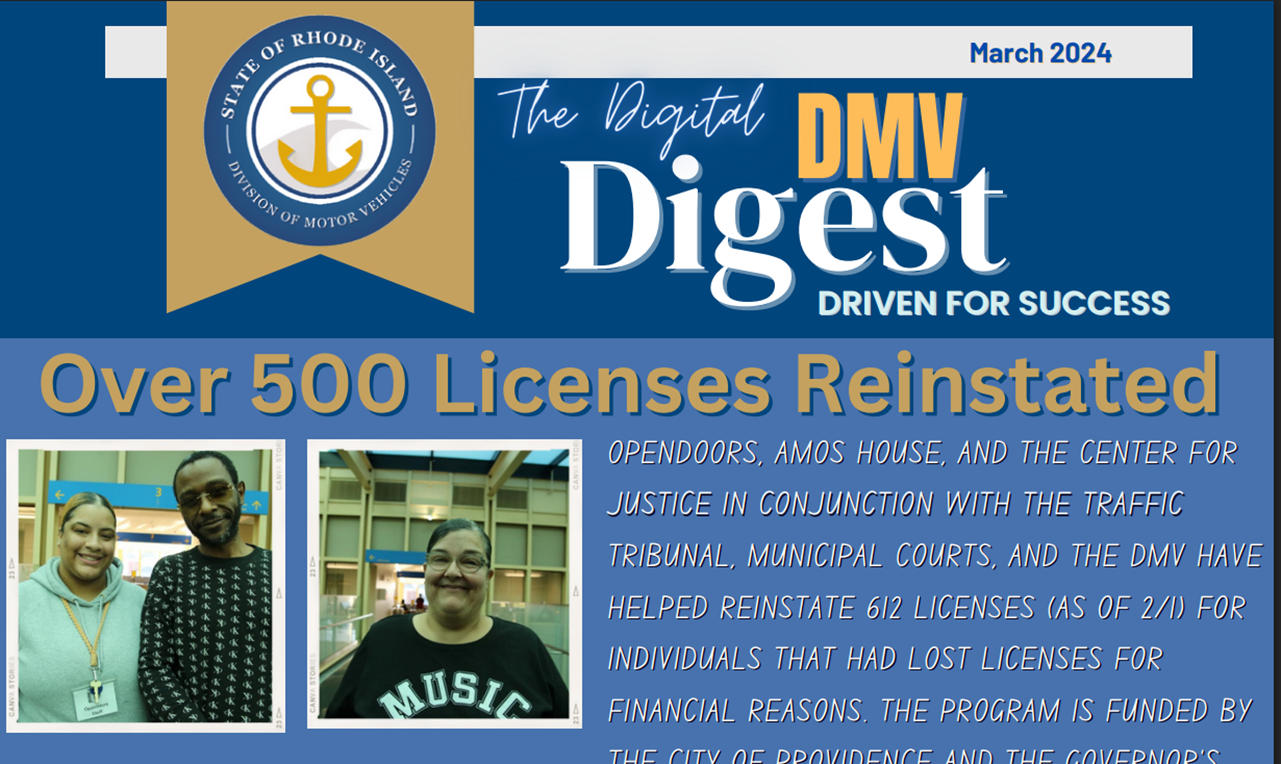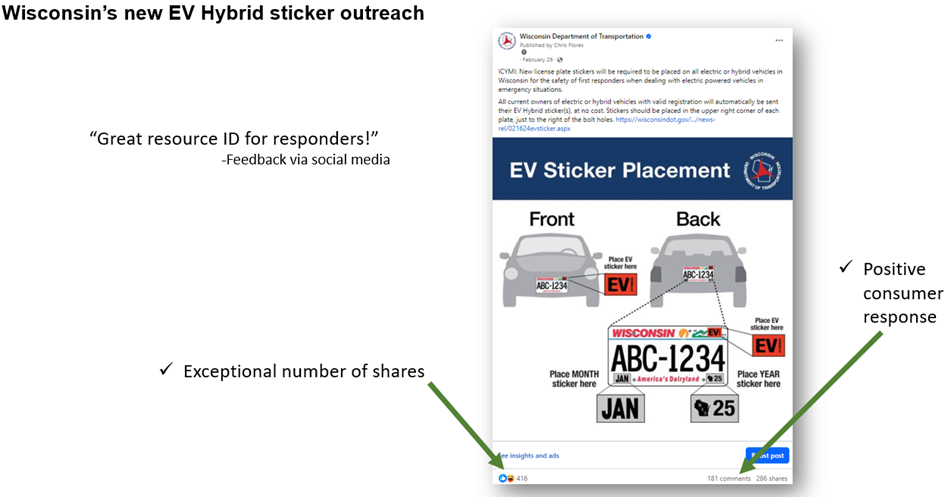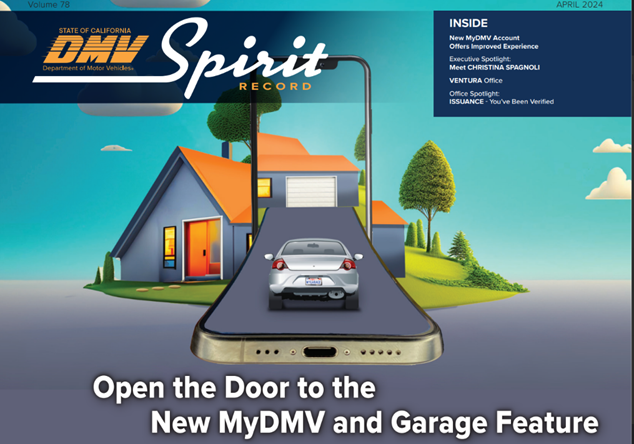2025 Winners
International and Region 2
Florida Department of Highway Safety and Motor Vehicles
Safe Start Florida - Child Safety Awareness Month 
The Florida Department of Highway Safety and Motor Vehicles created resources for agencies, organizations, safety advocates, or dedicated individuals to use in promoting child safety awareness in Florida. Public Affairs Officers attended as many back-to-school events as possible, hosting booths to discuss safety tips for returning students. At each booth, FLHSMV had magnets, balls, and other items with the logo and safety information. They also used internet radio and online social to promote this campaign in addition to attending events and getting face to face time with the community and show that we are there to support child safety awareness.
Region 1
Rhode Island Division of Motor Vehicles
Driving Employee Engagement: The Digital DMV Digest 
The RIDMV set out to bring its workforce across the state closer together in a more meaningful way. The result? The Digital DMV Digest, a monthly internal newsletter curated to inform, inspire, and celebrate the incredible people, stories, events, and work behind the RIDMV. The Digital DMV Digest emerged as a vibrant, digital publication, delivering essential updates and engaging stories while highlighting the people and efforts that make the RIDMV more than just an organization...a special community. Monthly, on the first Friday, The Digital DMV Digest delivers more than just information-- it creates a sense of pride and belonging.
Region 3
Wisconsin Department of Transportation, Division of Motor Vehicles
Wisconsin DMV’s Hybrid/EV Sticker 
A new state law required that orange and black “EV Hybrid” stickers be attached to each license plate issued for an electric or hybrid vehicle to help first responders when dealing with the unique safety risks of electric powered vehicles in emergency situations. Wisconsin DMV was tasked with quickly designing an informative, attractive sticker and communicate the proper placement to owners of Wisconsin’s 146,000 electric and hybrid vehicles. This simple design directly focuses the viewer’s attention, communicates critical facts and achieves the goal of excellence in visual design.
Region 4
California Department of Motor Vehicles
Open the Door to the New MyDMV and Garage Feature 
The California Department of Motor Vehicles began offering customers a more personalized online experience when using their MyDMV account with an added “garage” feature where they can “park” all their vehicle-related information in one spot. This new service was explained to DMV’s 9,000 team members in an article that appeared in the April 2024 DMV Spirit Record employee magazine. For the cover, a graphic designer in the Office of Public Affairs created a unique artistic representation that captured the “essence” of the revised digital offering.
